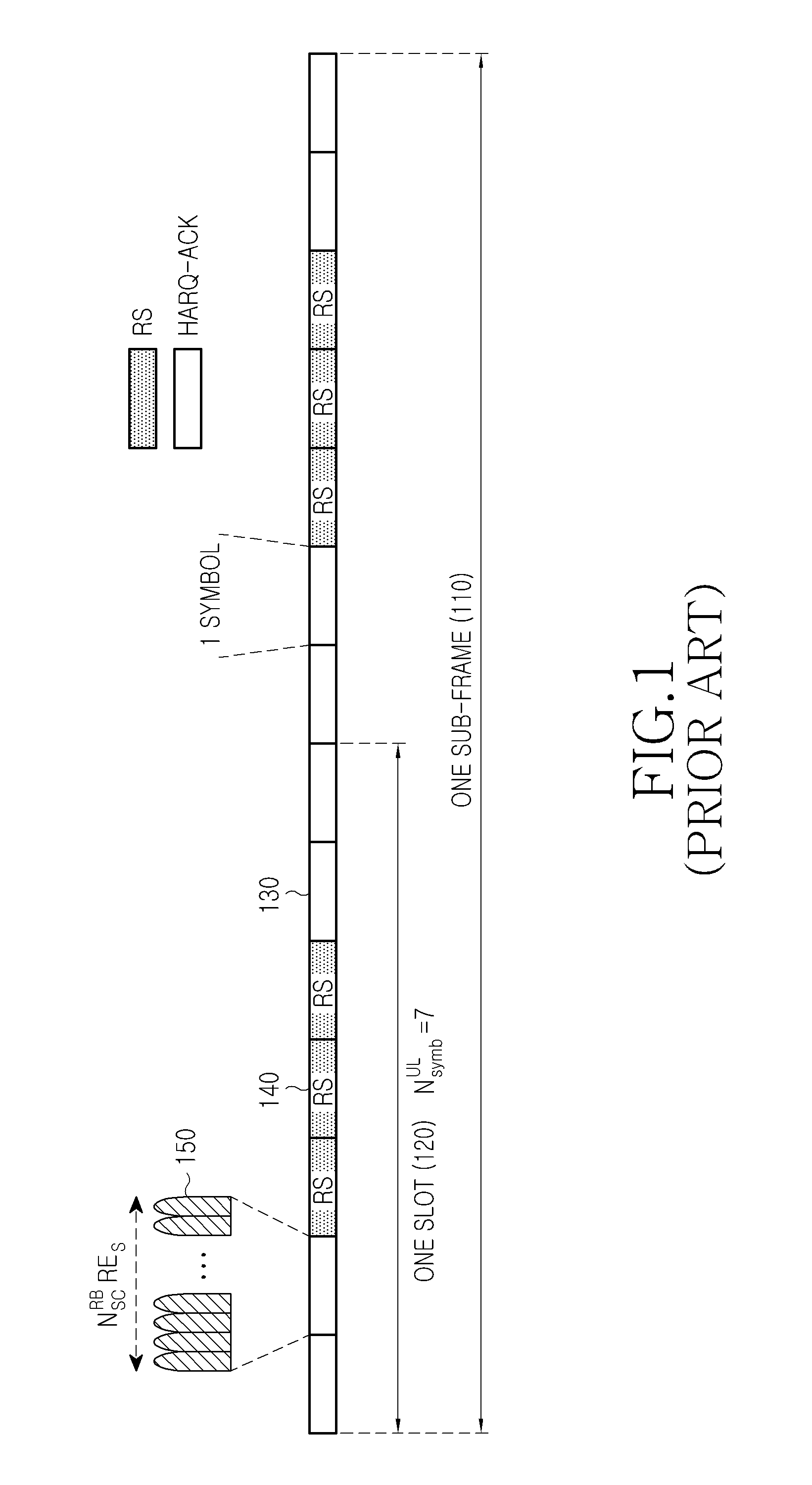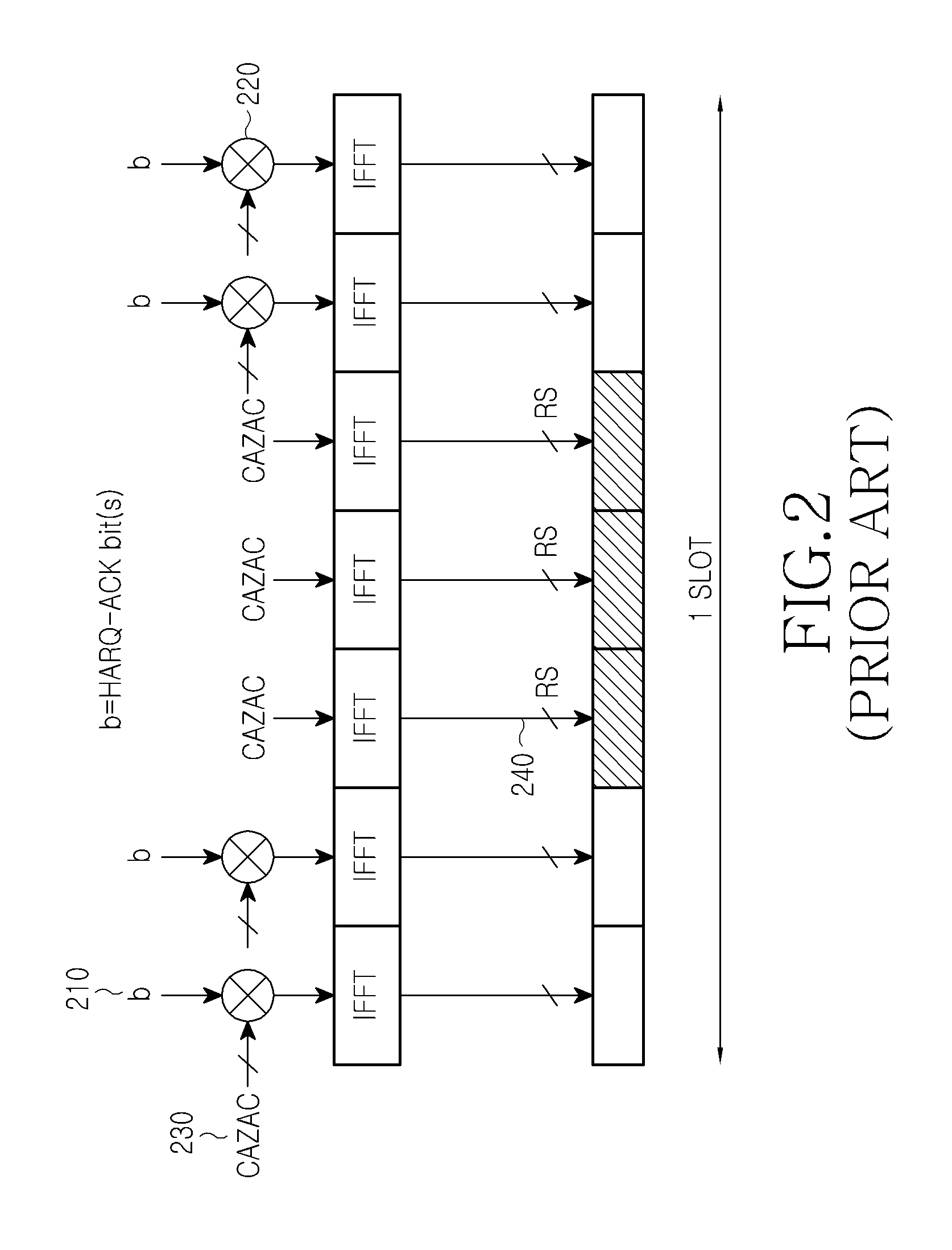Transmission diversity and multiplexing for harq-ack signals in communication systems
a communication system and harq-ack technology, applied in the field of wireless communication systems, can solve the problems of reducing the dl throughput of a nack, unnecessary retransmission, and not being able to support such a dynamic range of achieving the effect of reducing the number of harq-ack bits and reducing the dl throughpu
- Summary
- Abstract
- Description
- Claims
- Application Information
AI Technical Summary
Benefits of technology
Problems solved by technology
Method used
Image
Examples
Embodiment Construction
[0055]Various embodiments of the present invention will now be described more fully with reference to the accompanying drawings. This invention may, however, be embodied in many different forms and should not be construed as limited to the embodiments set forth herein. Rather, these embodiments are provided so that this disclosure will be thorough, complete and will fully convey the scope of the invention to those skilled in the art.
[0056]Additionally, although the present invention is described in relation to a Single-Carrier Frequency Division Multiple Access (SC-FDMA) communication system, it also applies to all Frequency Division Multiplexing (FDM) systems in general and to an Orthogonal Frequency Division Multiple Access (OFDMA), OFDM, FDMA, Discrete Fourier Transform (DFT)-spread OFDM, DFT-spread OFDMA, SC-OFDMA, and SC-OFDM in particular.
[0057]An embodiment of the present invention considers the application of ORTD for the HARQ-ACK signal transmission when the DCI formats sch...
PUM
 Login to View More
Login to View More Abstract
Description
Claims
Application Information
 Login to View More
Login to View More - R&D
- Intellectual Property
- Life Sciences
- Materials
- Tech Scout
- Unparalleled Data Quality
- Higher Quality Content
- 60% Fewer Hallucinations
Browse by: Latest US Patents, China's latest patents, Technical Efficacy Thesaurus, Application Domain, Technology Topic, Popular Technical Reports.
© 2025 PatSnap. All rights reserved.Legal|Privacy policy|Modern Slavery Act Transparency Statement|Sitemap|About US| Contact US: help@patsnap.com



